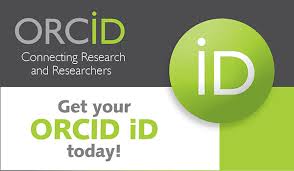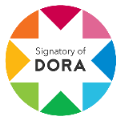Impact of Interactive Websites on the Development of Speaking Skills at A2 Level in EFL Learners
Resumen
The integration of interactive websites in English as a Foreign Language (EFL) instruction has transformed the development of speaking skills, especially for learners at the A2 level. These platforms offer dynamic and engaging environments where students can record their voices, receive feedback, and practice speaking in low-anxiety settings. Unlike traditional methods, interactive websites allow learners to repeat tasks, reflect on their performance, and gradually build fluency and confidence. Visual and auditory elements enhance comprehension and pronunciation, while peer collaboration encourages communicative competence. By supporting learner autonomy and providing personalized learning experiences, these tools address common barriers in oral language development such as fear of public speaking and limited classroom time. This study examines the impact of such platforms on speaking performance, focusing on fluency, accuracy, motivation, and student participation. Results suggest that digital tools play a significant role in enhancing oral communication skills and should be considered valuable components of modern language instruction.
Palabras clave
Referencias
Aoki, K. (2014). Digital technology and language learning: Students’ perspectives. Language Learning & Technology, 18(2), 91–104.
Byram, M. (2020). Teaching and assessing intercultural communicative competence. Multilingual Matters.
Dörnyei, Z. (2009). The psychology of second language acquisition. Oxford University Press.
Götz, S. (2013). Fluency in native and nonnative English speech. John Benjamins Publishing Company.
Hashim, H. (2018). Application of technology in the classroom: A study among university ESL students. Turkish Online Journal of Educational Technology, 17(2), 34–41.
Hymes, D. (1972). On communicative competence. In J. B. Pride & J. Holmes (Eds.), Sociolinguistics (pp. 269–293). Penguin.
Kompen, R. T., Edirisingha, P., Canaleta, X., Alsina, M., & Monguet, J. M. (2019). Personal learning environments based on Web 2.0 services in higher education. Telematics and Informatics, 38, 194–203.
O'Reilly, T. (2008). What is Web 2.0. Communications & Strategies, 65(1), 17–37.
Paithankar, P. (2018). Advantages of Web 2.0 in language teaching and learning. International Journal of Academic Research and Development, 3(1), 434–437.
Reinders, H., & White, C. (2016). Twenty ideas for using mobile phones in the language classroom. ELT Journal, 70(1), 87–96. https://doi.org/10.1093/elt/ccv020
Roach, P. (2009). English phonetics and phonology (4th ed.). Cambridge University Press.
Savignon, S. J. (2018). Communicative competence: Theory and classroom practice (2nd ed.). McGraw-Hill Education.
Sharma, S. (2018). Communicative approach in teaching English as a foreign language: A case study. Journal of Research in Humanities and Social Science, 6(2), 1–4.
Simanullang, F. M. (2018). Improving students' speaking achievement through video blogs. Journal of English Education and Teaching, 2(1), 1–11.
Wang, S., & Vásquez, C. (2012). Web 2.0 and second language learning: What does the research tell us? CALICO Journal, 29(3), 412–430.
Yuyun, I. (2018). Digital natives in digital era: A preliminary study on Indonesian EFL learners’ digital literacy. Journal of Language and Literature, 18(1), 12–20.
DOI: https://doi.org/10.23857/pc.v10i7.9900
Enlaces de Referencia
- Por el momento, no existen enlaces de referencia
Polo del Conocimiento
Revista Científico-Académica Multidisciplinaria
ISSN: 2550-682X
Casa Editora del Polo
Manta - Ecuador
Dirección: Ciudadela El Palmar, II Etapa, Manta - Manabí - Ecuador.
Código Postal: 130801
Teléfonos: 056051775/0991871420
Email: polodelconocimientorevista@gmail.com / director@polodelconocimiento.com
URL: https://www.polodelconocimiento.com/













